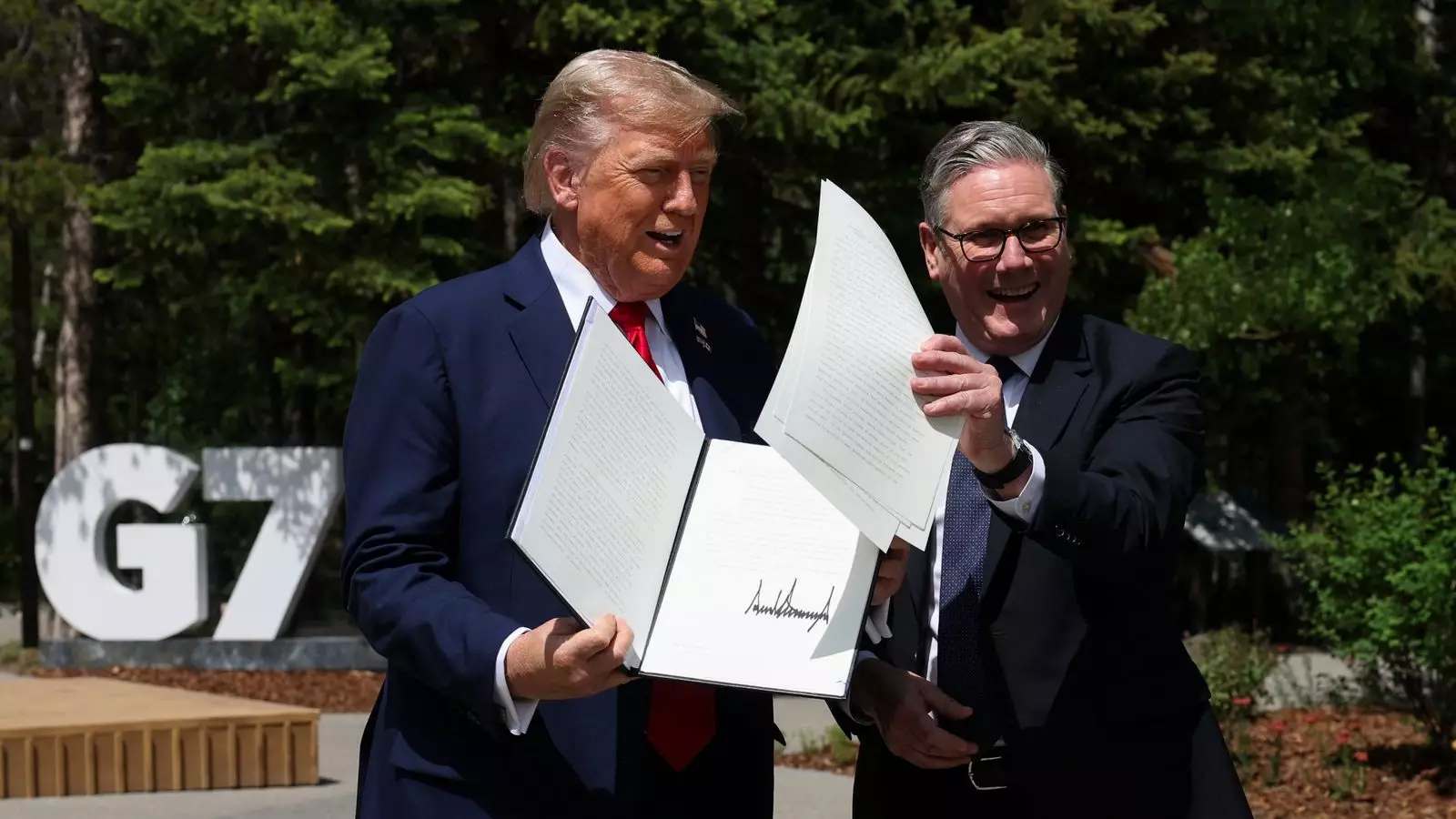As the signing of the UK-US trade deal graces headlines, one struggles to reconcile the upbeat proclamations from both sides with the glaring complexities lurking beneath the surface. US President Donald Trump proudly asserted that the deal, which he claims is “done,” will foster job growth and generate income. However, a closer inspection of this so-called comprehensive trade agreement reveals a reality that is not only far less rosy but also fraught with risks and uncertainties. The triumphant declarations from Trump and the UK Prime Minister, Sir Keir Starmer, serve as a veneer, obscuring the ever-present shadows of economic turbulence that may soon emerge.
Trump’s remarks, laden with extravagant assurances, come off more as political theater than as a substantive promise to the populace either in the United States or the United Kingdom. The underlying realities of international trade often involve much more than a mere exchange of goods. Trump’s emphasis on job creation and income seems devoid of the factual underpinning required to affirm such claims. How many jobs, in real terms, will this deal yield, and at what cost? These crucial queries remain dangerously unanswered.
The Tariff Dilemma: A Double-Edged Sword
Another aspect of the trade deal that deserves scrutiny lies in its handling of tariffs—an essential lever that impacts the very lifeblood of the manufacturing sector. While the agreement assures a reduction of tariffs on crucial industries such as aerospace and automotive, there exists an unsettling ambiguity surrounding levies on British steel exports. Trump’s remark that the UK is “very well protected” against future tariffs warrants skepticism. It implies not a protective shield but rather a precarious balance where vulnerability lurks just out of sight.
Sir Keir Starmer’s assertion that this deal is a “really important agreement” rings hollow in an era defined by economic fragility. He presents a narrative of strength, yet the influence of future tariffs on British steel could unravel the very fabric of this supposedly lucrative deal. What good is a trade agreement if it can reverse progress overnight? The complexities of trade do not fit neatly into sound bites or photos in the Canadian Rockies. They are laced with economic realities that can render political optimism misguided at best, naive at worst.
Decoding the Diplomatic Romance
One of the more fascinating undertones of this agreement lies in the relationship dynamics between Trump and Starmer. The warmth expressed by Trump, who called Starmer a “great” prime minister, may serve more as political posturing than as a reflection of a genuine rapport. The quip about Starmer being “slightly more liberal” underscores a complex interplay of ideology that begs further examination. Such interactions between leaders often pave the way for agreements that prioritize political expediency over substantive progress.
Starmer’s eagerness to align himself with an administration known for its erratic policies comes off as strategic, yet one must wonder whether the cost of aligning with Trump’s bravado is a trade-off worth making. The notion of “friends in a short period of time” is charming but dangerously superficial; amity in international politics is seldom so simple. It’s a relationship steeped in negotiation, and the scales often tip when it comes to making decisions that genuinely benefit the citizens of each nation involved.
Symbolism Over Substance at G7
As the two leaders emerged from their discussions, the symbolic holding of the agreement—a scenario marred by falling leaves of paper—epitomizes a deeper issue within this entire trade negotiation. It serves as a potent metaphor for the fragility of this alliance. Is it truly a robust trade deal, or simply a collection of well-crafted phrases destined to fall apart at the first gust of criticism? The document, as portrayed, is a beacon of hope; yet its physical disarray foreshadows potential pitfalls that cannot be overlooked.
It is imperative that public sentiment reflects on the implications of such agreements beyond their immediate perception of economic prosperity. A trade agreement can lure citizens with promises, but it is seasoned criticality and accountability that will determine whether those promises will materialize into durable benefits for all. The political narrative spun at the G7 summit must not distract from the potential vulnerabilities embedded in the fabric of this newly minted agreement. The future of the relationship between the UK and US hangs precariously on the threads of an agreement that, while celebrated, could threaten the very jobs and livelihoods it purports to protect.


Leave a Reply